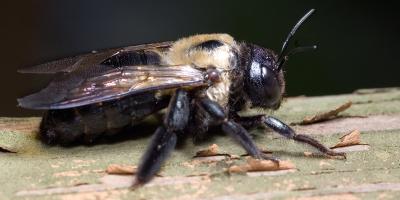Everything You Need To Know About Cluster Flies

There’s an old bit of wisdom that says there is strength in numbers - and for flies of all sizes, the numbers game plays a huge role in their continued success. But for one particularly troublesome fall invader, this strategy carries exceptionally well right out of summer and into the colder autumn and winter months: the cluster fly.
Although not exactly the meanest or most dangerous flying insect we’ve encountered, cluster flies can be a serious nuisance if left to their own devices. Here’s a look at what property owners and business professionals can expect from a cluster fly infestation, and what you can do to keep your building safe from the scourge straight through until spring and beyond.
What Exactly Are Cluster Flies?
Although often confused at first glance with the standard house fly, cluster flies are actually considered less dangerous to humans because they do not lay eggs in human food. However, a large gathering of cluster flies near a window or on a warm indoor wall can still make for an annoying and messy intrusion, and building owners do well to keep cluster flies from setting up shop where they don’t belong.
Small, black with a checkerboard abdomen, and with wings that overlap almost completely, cluster flies are a regular of a nuisance to gardeners for their parasitic taste for earthworms. But while cluster fly larvae may rely on earthworms to feed and grow to their adult stage, adult cluster flies are far more interested in finding a warm place to ride out the long winter - and that’s where indoor spaces like attics, basements, and low-traffic closets can come into play.
Cluster flies can be distinguished from common house flies by their relatively sluggish flight patterns and distinctive coloring, as well as the small amounts of excrement or waste they might leave behind on whatever surface they’ve gathered on.
What Attracts Cluster Flies
Most cluster flies first start to appear during late August and early September, and by the time the leaves start to change color they’re in the market for one thing and one thing only: warmth.
Although many cluster fly colonies will seek out the solitude of a quiet corner for their home base, it’s not uncommon to find several gathered indoors by a sunny window on a cold winter day. The colony will likely not be reproducing in the structure or building during these cold months, but will gather (as the name implies) in large groups to catch some sun and share the warmth.
What To Do If You See A Cluster Forming
If you’ve noticed cluster flies making a home of your indoor space, the solution may be a bit more simple (or more complex) depending on your situation.
If cluster flies are gathered in your space early in the season - late August or early in the fall - one short term solution may be to simply open your windows and encourage the flies to leave on their own. While this isn’t a permanent fix to how they got inside in the first place, this can alleviate some of the stress of having a cluster of insects around where they’re not wanted.
For a more substantial fix, it may be necessary to identify and patch up any holes, cracks, or unseen entrances to your building’s undisturbed spaces. Check your attic, basement, and other dark and quiet areas for openings and patch them up to prevent entry by insects like cluster flies. You may need the help of an experienced pest professional to adequately identify address hard-to-find openings to keep flies out for good moving forward.
In cases of where a large colony has set up shop in your area, the best answer may be a comprehensive pest control solution with the right tools and pesticides. A professional pest management expert can help identify the best solution for your space and your needs to quickly and safely remove cluster flies from your property.
Keep Cluster Flies Away From Your Area
While not much of a threat to human health, cluster flies can be an annoying and unsanitary addition to your indoor space during the fall and winter seasons.
Don’t let cluster flies make a home where they don’t belong. If you notice this pesky pest in your office or building, contact our pest management experts at JP Pest Services and we can work to make sure your autumn is fly-free for months to come.



